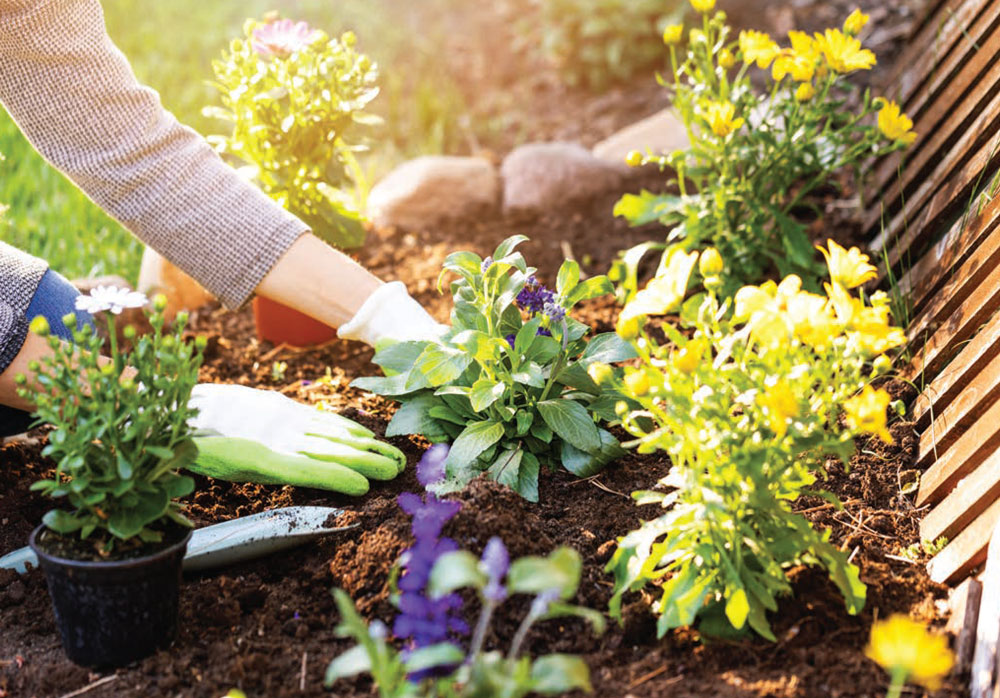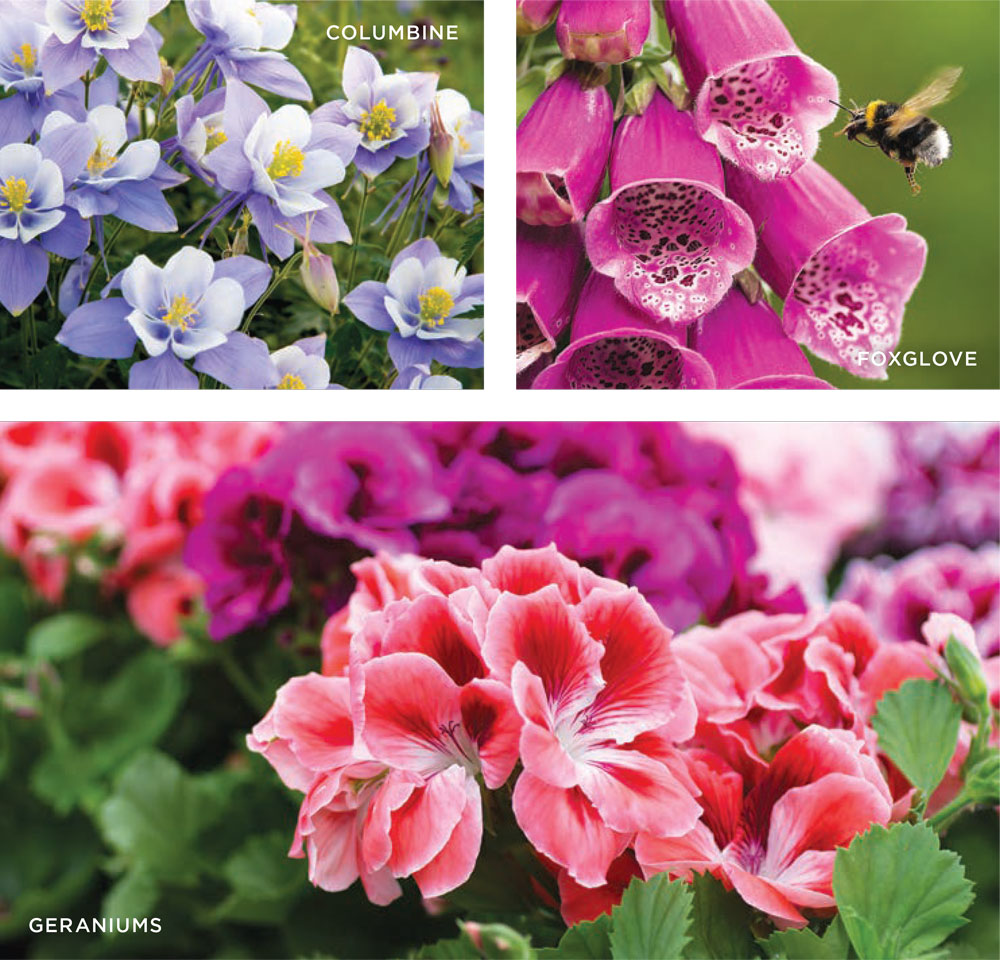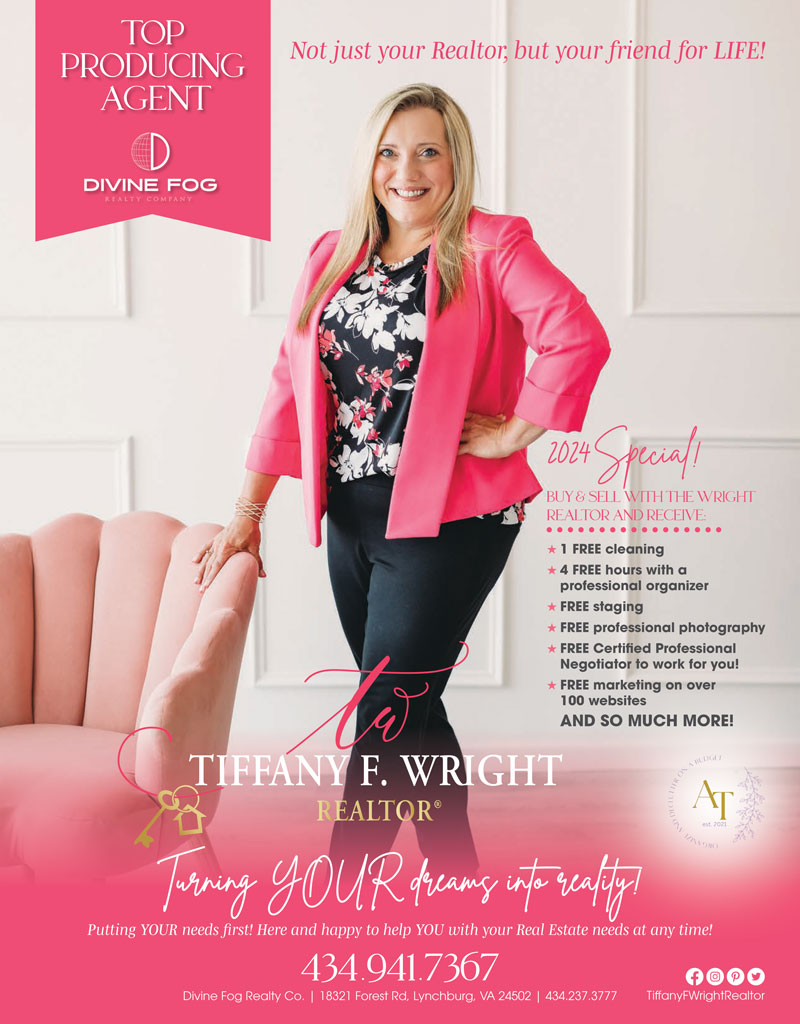Animal Attraction

CREATE A GARDEN THAT MAKES YOUR FAVORITE POLLINATORS FEEL AT HOME
No matter how old I get or the level of gardening experience I accumulate, whenever I see a butterfly come in for a landing or a hummingbird zip in for a snack, I feel the rush of excitement I experienced as a child. I hold my breath — craning my neck at attention — as I watch a small scene unfold.
Of course, we build our gardens to look beautiful, carefully selecting colors and textures that create a visually appealing landscape. However, also consider the wonderful pollinator friends your plants and flowers may entice, such as hummingbirds, butterflies and bees.
Huckleberry Knob Nursery, located at 1469 Sunnymeade Road in Campbell County (about five miles from River Ridge Mall), opened in March 2022, but the owners have been in the green industry for 25 years through their other business ventures: Lynchburg Landscapes and Lynchburg Lawn Care. During the pandemic, owner Scott MacLeod says they noticed a huge shift in residents seeking out pollinator-friendly plants — and that’s a trend he can support.
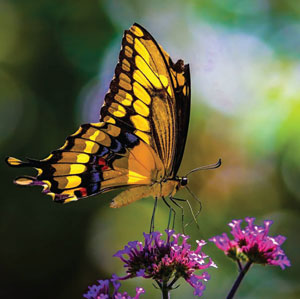 “Pollinators are a massive part of the ecosystem, and because we are so disconnected from the food chain, we just don’t see that connection. It’s very important for our life force,” he said, citing a U.S. Department of Agriculture statistic that about 35 percent of the world’s food crops depend on animal pollinators to reproduce.
“Pollinators are a massive part of the ecosystem, and because we are so disconnected from the food chain, we just don’t see that connection. It’s very important for our life force,” he said, citing a U.S. Department of Agriculture statistic that about 35 percent of the world’s food crops depend on animal pollinators to reproduce.
Bottom line: You can attract some of your favorite pollinator friends to your garden and contribute to a bigger cause at the same time. It’s a win-win!
If you’re ready to get started, here are a few of MacLeod’s top tips for bringing pollinators to your garden:
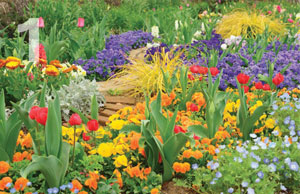 Tip #1: The brighter, the better
Tip #1: The brighter, the better
The brightest, most cheerful colors draw in some of our favorite garden visitors. As MacLeod explains, there is a reason hummingbird feeders often include the color red.
“Hummingbirds tend to gravitate toward red more often. But any bright color. However, generally red is their first go to,” he said.
And according to the National Wildlife Federation, adult butterflies are attracted to red, yellow, orange, pink and purple blossoms. You can’t go wrong with choosing an assortment of these colors to entice butterflies to your yard.
 Tip #2: Keep them coming back for more
Tip #2: Keep them coming back for more
Just like we will sometimes drive out of the way to go to “our” familiar grocery store, animals, birds and insects are also creatures of habit.
“They are generally nesting close by,” explained MacLeod. “If they know they have a steady food source there they will want to keep coming back.”
That’s why it’s important to consider a layered approach with your garden, making sure to include a blend of plant materials, shrubs, perennials and annuals so that your garden has something to offer for pollinators at various times of the year.
“It creates different textures and colors but also different bloom times,” MacLeod said.
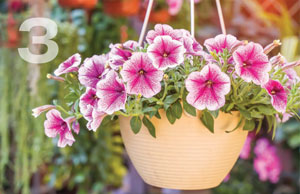 Tip #3: Let it hang…
Tip #3: Let it hang…
Hanging baskets on your deck or porch is a way to draw pollinators to different areas around your home, giving them even more places to frequent.
“Some people like to just have one type of flower in their baskets, others like to do a combination so that some of the flowers are growing upright and others are hanging out or cascading out of the basket,” said MacLeod. He prefers a combination approach, such as a mix of petunias, lantana and impatiens.
Caring for hanging baskets can be a little tricky, especially as the weather gets warmer. MacLeod says it’s important to make sure you are selecting a plant that can handle the amount of sun your porch receives. Watering your hanging baskets a little bit every day is also critical.
“And in some cases, you may need to take your baskets down and give them a rest for a day or two,” he said, adding that “moisture plus” potting soil can help hanging baskets retain water. Sphagnum moss on top of the soil can also prevent it from drying out.
 Tip #4: …and let it climb
Tip #4: …and let it climb
Whether it’s on a fence or a pergola, MacLeod has also noticed a lot more customers adding vines into their outdoor landscapes — and pollinators love them.
“For the most part, vines are very easy to grow,” MacLeod said. “The biggest thing is picking the right vine for the location, for your soil and sun requirement. After that it’s just a matter of training it properly.”
Jasmine performs really well in this area as does a hybrid honeysuckle. You can plant vines year round, but MacLeod recommends the fall season so that the vines miss the high heat of summer when they are just starting out.
Now, let’s get specific. Here are a few of MacLeod’s favorite pollinator-friendly choices at Huckleberry Knob Nursery:
Perennials
 BUTTERFLY BUSHES
BUTTERFLY BUSHES
Their name gives them away. Butterfly bushes can grow large (anywhere from 4 to 10 feet tall) and there are miniature versions known as Pugster and Lo and Behold (anywhere from 12 inches to 2 feet tall). Both bloom throughout spring and into summer and do extremely well in our area’s clay soil.
BEE BALM
Bee balm is available in many colorful choices — from different shades of pink to very bright purples, whites and blues. Better yet, they are deer resistant. These perennials grow anywhere from 18 inches tall to upwards of 3.5 feet tall.
DAY LILIES
Despite the name, these are not actually lilies. These large, colorful perennials are a top choice for gardeners since they are easy to grow. The only downside is that they are not deer resistant.
COLUMBINE
The columbine plant is a perennial with a gorgeous shape, almost appearing as if two flowers are growing as one. Columbine comes in a range of bright colors and is known to attract top pollinators such as butterflies, moths, bees and hummingbirds — but thankfully, not deer!
LUPINE
Lupine has been gaining traction in the residential market, according to MacLeod. It’s a perennial that you often see growing on the side of the highways in Virginia or North Carolina. “The yellow blooms are really pretty and can grow anywhere from 2 to 4 feet tall,” he said.
Annuals
GERANIUMS, FOXGLOVE, HOLLYHOCK, IMPATIENS, LANTANA AND PETUNIAS
All of the annual recommendations above do a great job bringing in butterflies and hummingbirds. They are available in a range of vibrant colors, and they also have a flower shape pollinators really like.
“A lot of these flowers have a tubular bloom and pollinators can easily access the nectar there. The color can attract them, and the nectar inside keeps them coming back,” said MacLeod. ✦
annuals, Bee Balm, bees, butterflies, butterfly bushes, columbine, day lilies, ecosystem, fence, foxglove, geraniums, hanging baskets, Hollyhock, hummingbirds, impatiens, lantana, lupine, national wildlife federation, Perennials, Pergola, petunias, pollinators
